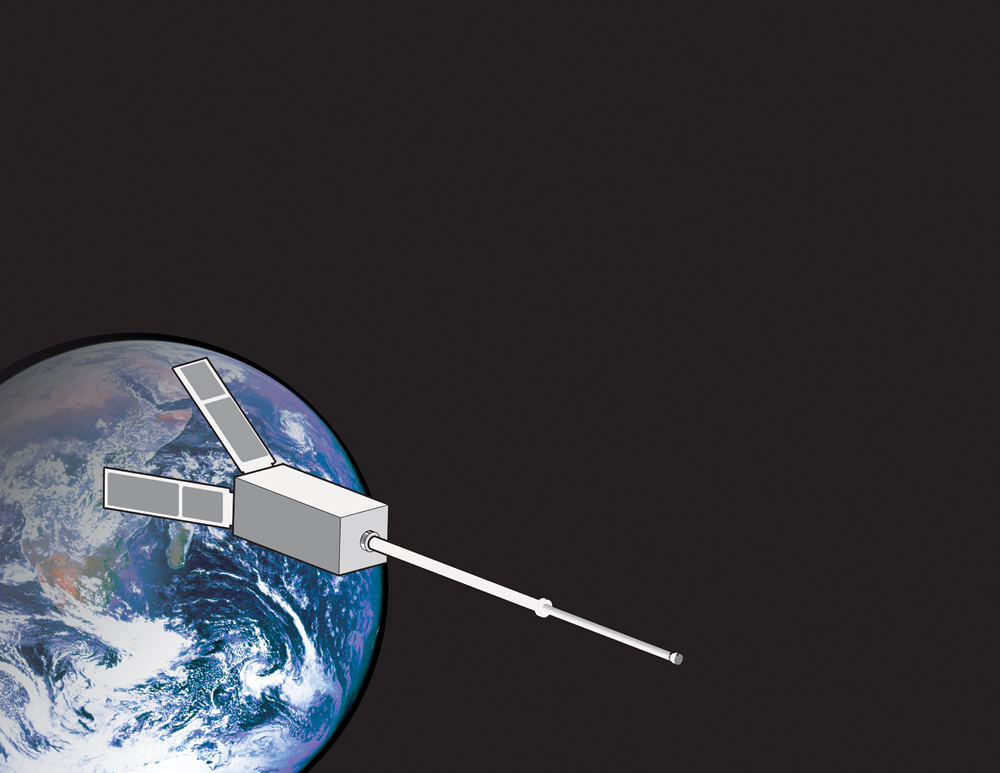Ernest Reid
Staff Writer
For the first time ever, York University students have a chance to send a satellite into space.
These innovative students are taking part in the very first Canadian Satellite Design Challenge (csdc). The challenge, to design and assemble a small satellite for scientific research, officially began back in January. Once constructed, these satellites will undergo the same tests all other space-bound objects must pass. The team with the best design will have its satellite launched into space sometime after September 2012.

York, competing against 12 other Canadian universities, has a diverse team, with first-year students working alongside PhD candidates. While most of the team members are in space science or space engineering, computer engineers, geography and Schulich students are key members as well. They are advised by faculty member and space engineer Dr. Hugh Chesser, who has worked on several satellites himself.
Rahul Goel is a Schulich student working on the project. While not a science major, he has always had an interest in engineering projects. Like the others, he’s focused on the satellite. Getting something of theirs into space is “the whole sense of achievement,” said Rahul. Like the others, he understood “it’s not just a two-month project” – this is a real commitment in their lives.
The csdc is an initiative by Larry Reeves and his company Geocentrix Technologies in Vancouver. He hopes this contest will encourage more student interest in the Canadian space industry and increase awareness of how important small-scale satellite missions are to Canada.
With this contest, organizers are hinting at the future of satellites. Dr. Chesser explained that today, satellites don’t need teams of engineers and scientists but that now companies can do a focused mission. “It’s not going to be an all-singing, all-dancing satellite mission,” he said. “But you can do a focused one for a really reasonable amount of dollars.”
York’s team is still relatively new, and has yet to even decide upon a name. They, like the other teams competing, are still exploring how they will fit their research plans into csdc’s strict design restrictions. Students will be building a nanosatellite, far smaller and lighter than normal satellites. Everything must fit into a container the size of a breadbox, weigh less than a newborn baby and cannot add to the orbital space debris. The cube-shaped nanosat must have on-board computing, solar power systems and carry a “scientific payload.”
The team paused when asked about the satellite’s payload; they are hesitant to show their cards this early in the contest. They did say, however, that their research plan is a “novel application of airglow emissions.” At this stage, they are still deciding between three different payloads, which will most likely include a spectrometre and a specialized camera. If the team wins, their satellite would be 600 to 700 kilometres above the planet, measuring changes in the light our atmosphere produces. Their research, they say, will benefit the public just as much as the scientific community.
Next year the team’s goal is to promote outreach and awareness on campus.
If launched, there are plans for a Blackberry app. Rahul explains that as the satellite camera takes pictures in orbit, the satellite will transmit its pictures to app users – seeing what the nanosat sees. If chosen, they hope to run their experiment for at least one year.
York’s team also still has fundraising to do. They expect the cost for this project to be in the $20,000 to $30,000 range. At the very least, “it’s going to cost $10,000,” said Rahul. They don’t expect to find this amount just through donations, he clarifies. The team is actively looking for sponsorships and equipment donations from faculty members hoping to do research into space.
The csdc reflects how satellite missions currently work and cost. Today’s electronics are small, powerful and reliable even in space. This means it’s possible to build a satellite out of commercially-built devices, which is much cheaper than making custom space-grade electronics. Small satellites are now affordable enough for companies and private organizations to build.
Reeves’ company Geocentrix links private organizations launching satellites with international launch providers. Reeves’ company will be the one arranging the winning satellite launch with space agencies like nasa. When the launch will occur, and which agency will be launching it, is unclear.
Since this is the first university satellite design contest in Canada, it’s hard to say who will be York’s biggest competition.
Other schools involved include Ryerson, the University of Winnipeg and the University of Waterloo. The competition will be stiff – Ryerson’s aerospace department is very close with the industry, and Winnipeg is the largest centre for aerospace engineering in Western Canada.
York’s team might have an edge with the materials and expertise offered by York’s Centre for Research in Earth & Space Science (cress). cress currently has on-going space missions and space-tested materials available. The team has real resources on hand to see what works and what doesn’t.
Joining the space race



York is definitely the winner.